Abstract
The production of peaches and nectarines is one of the important indicators that are closely watched in countries around the world. According to the latest data for 2022, Greece has the largest production, achieving 23.4 tons per hectare. This figure reflects Greece’s proactive agricultural policy, favorable climatic conditions, and the high level of technology and experience of farmers. Meanwhile, other countries are also focusing on peach and nectarine production, and competition has been going on for many years. Mediterranean countries such as Spain and Italy also boast high production, and other countries are also introducing new technologies and cultivation methods to improve productivity. In addition, various factors, such as changing consumer preferences and the effects of climate change, affect production. Taking these factors into account, countries continue to make efforts to build effective agricultural strategies and increase production.
Peach and nectarine production (worldwide)
Data on peach and nectarine production shows changes in various countries over the past few decades. Of particular note is Israel’s record of an astounding production of 44.7 tons/hectare in 2008. This was the highest level in the world at the time and indicated the success of Israel’s agricultural technology and policies. However, production has declined in the following years and is now at 42.6% of its peak. This trend is not only seen in Israel but also in other countries. Agriculture is easily influenced by factors such as weather and economic conditions, and production tends to fluctuate greatly. Also, while production can increase with the introduction of new technologies and agricultural policies, productivity can also decrease due to the effects of climate change and environmental issues. On the other hand, the demand for peaches and nectarines remains high and they are consumed as popular fruits around the world. Therefore, agricultural authorities and producers in each country continue to work to stabilize and increase production, such as adopting sustainable agricultural practices and improving varieties. It is hoped that these efforts will result in a more stable supply of peaches and nectarines in the future.
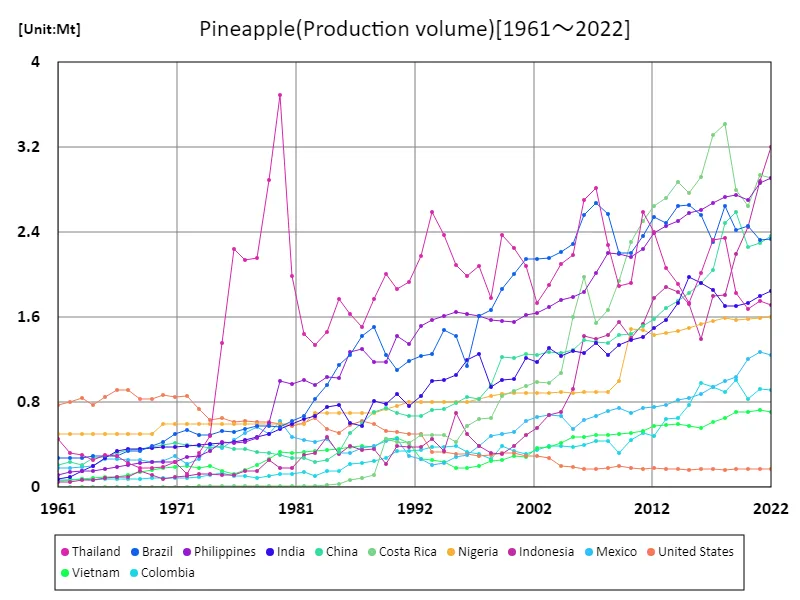

The maximum is 3.69Mt[1980] of Thailand, and the current value is about 46.5%
Peach and nectarine production by country (latest year)
The 2022 data on the production of agricultural peaches and nectarines is interesting. Jordan has the highest production of 27.8 tons/hectare, which is a notable achievement. Given that the average production is 10.8 tons/hectare, Jordan’s figures are very good. Jordan’s agricultural policies and technological advances will likely contribute greatly to this success. On the other hand, looking at the overall production figure of 843 tons/hectare, we can see that peach and nectarine production is still limited. This suggests that there are various challenges and constraints in agriculture. Climate change, land constraints, and differences in the adoption of agricultural technology may be affecting production. However, the demand for peaches and nectarines around the world remains high, and producers and governments are continuing to work hard to meet this. Various efforts are being made, including the introduction of sustainable agricultural practices, breeding improvements, and investment in agriculture. In the future, it is expected that more efficient and sustainable production systems will be built and peach and nectarine production will increase.
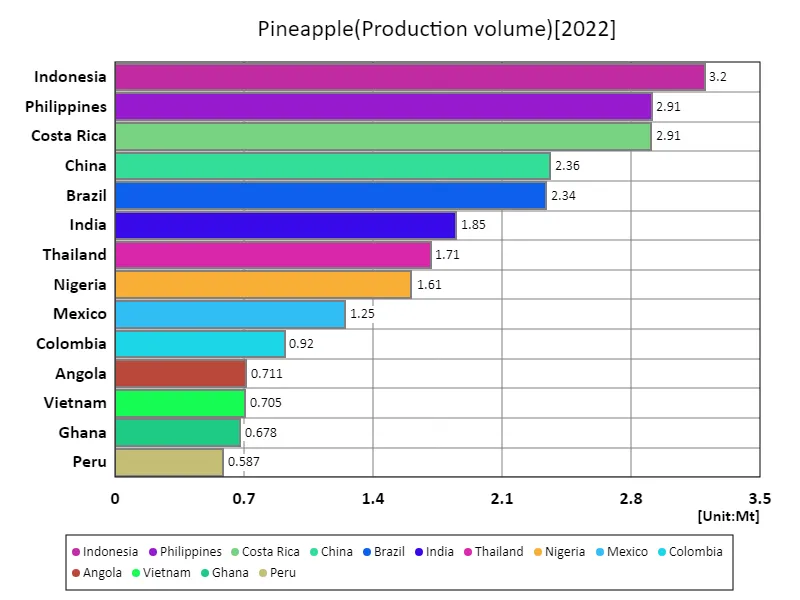

The maximum is 3.2Mt of Indonesia, the average is 341kt, and the total is 29.3Mt
Peach and nectarine production (continent)
The 2022 peach and nectarine production data is interesting. Europe achieved a high production of 18.3 tonnes/hectare, the highest overall, which indicates the health of the region’s agriculture. This reflects the advanced level of agricultural technology and management practices in Europe. From this data, it can be seen that global peach and nectarine production is stable. In particular, the record high production in 2022 suggests sustained progress in the agricultural industry. This can be attributed to various factors, including improved varieties and cultivation techniques, and modernization of agricultural facilities. Peaches and nectarines are also widely consumed around the world, and their high demand also contributes to the stability of production. This makes it easier for farmers to adjust production according to demand. However, factors such as climate change and changes in agricultural policies may affect future production. Therefore, agricultural authorities and producers need to develop appropriate strategies to address these factors and strive to build sustainable agricultural systems.
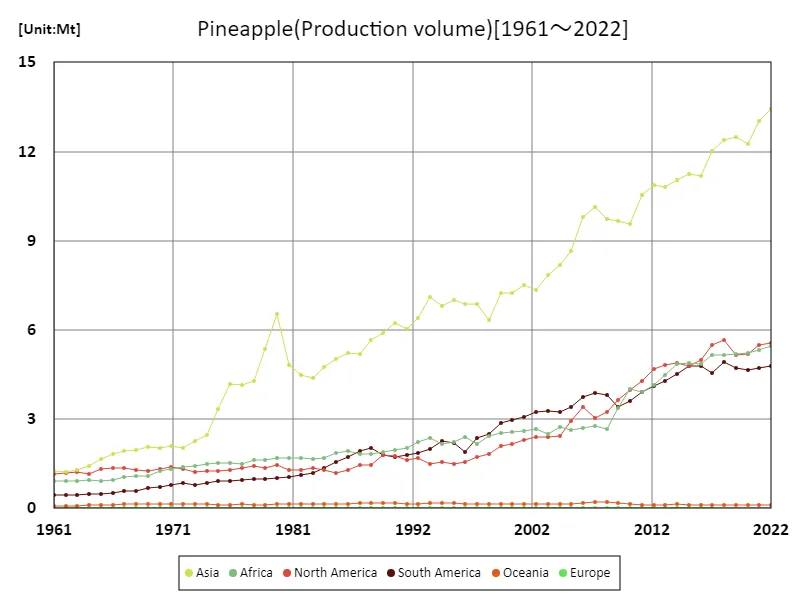

The maximum is the latest one, 13.4Mt of Asia
Peach and nectarine production (latest year, continental)
The 2022 peach and nectarine production data shows a notable figure of 18 tons/hectare, the highest overall for Asia. This makes it clear that parts of the Asian region have high productivity. Given that the average production is 13.9 tons/hectare, the level of agricultural technology and management practices across the Asian region can be considered relatively high. On the other hand, the overall production figure of 83.3 tons/hectare shows that peach and nectarine production is still limited. This suggests that there are various challenges and constraints in agriculture. Changes in climatic conditions, land constraints, and lack of agricultural infrastructure can affect production. On the other hand, peaches and nectarines are widely consumed around the world, and their high demand also contributes to the stability of production. This makes it easier for farmers to adjust production according to demand. Going forward, it is important for agricultural authorities and producers in the Asian region to continue their efforts to sustainably increase production. Examples of this include the introduction of sustainable agricultural practices, technological innovation, and investment in agriculture. It is expected that these efforts will result in a more stable supply of peaches and nectarines in the future.
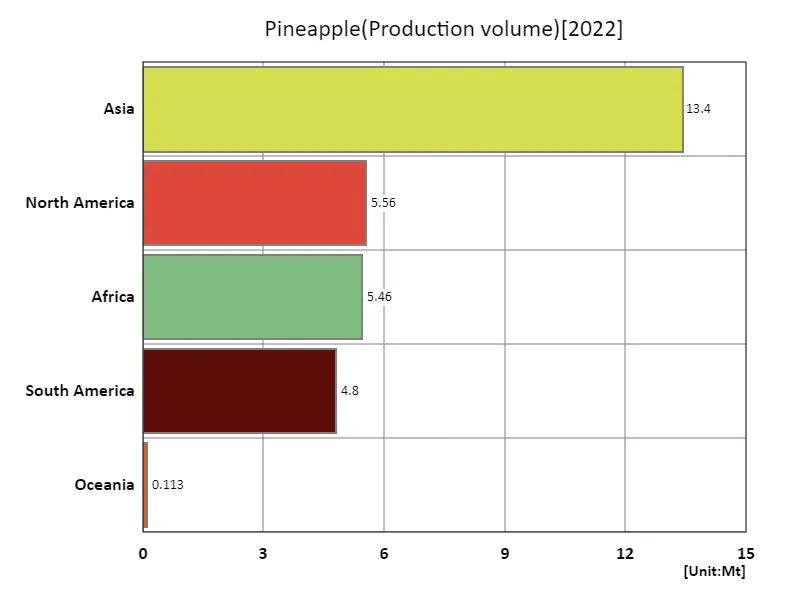

The maximum is 13.4Mt of Asia, the average is 5.87Mt, and the total is 29.4Mt
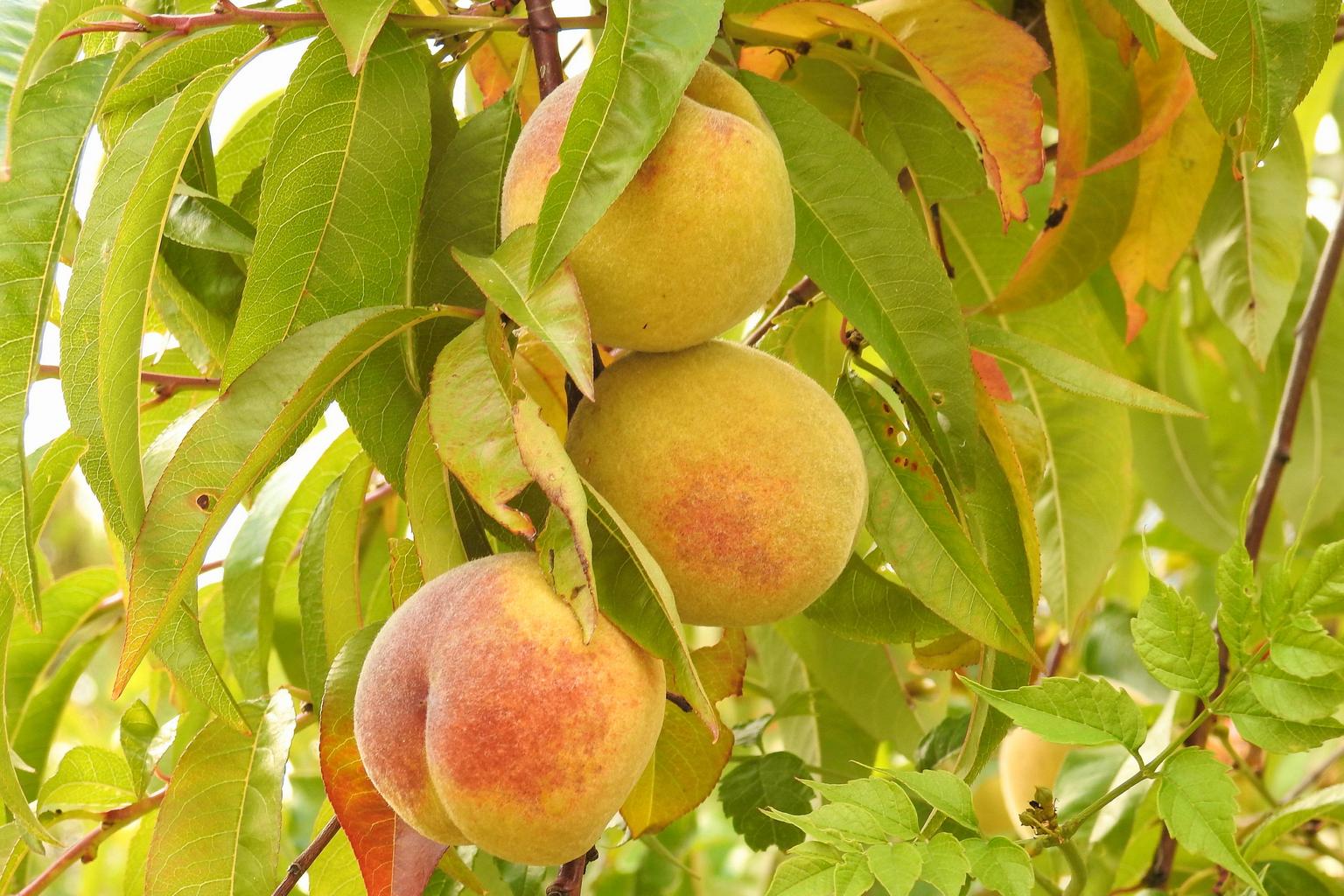


Comments